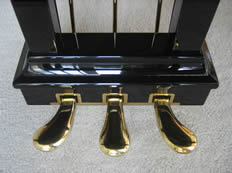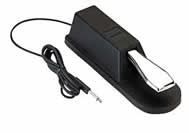New Tutorial: How to Use the Sustain Pedal on the Piano or Keyboard

If you haven’t begun to use the pedal yet, you’re in for a thrill when you hear what a huge difference it can make in your playing. And if you are using it but without really knowing what you’re doing, I’ll show you how to get the most out of this essential tool.
I’m talking about the sustain pedal, or damper pedal. On an acoustic piano, it’s the one on the right. On a keyboard, it’s a separate device that sits on the floor and attaches to the instrument via a cable.
Chopin, the great pianist and composer of the 1800’s, called this pedal the soul of the piano, and for good reason. By sustaining notes after you release them, the pedal creates a wonderfully smooth, expressive, effect. For ballads, classical music, and in truth, most kinds of music, learning to use the pedal effectively is an important part of your training.

As a private teacher, I find that students are rarely able to learn how to pedal without instruction, because the way you need to use it is going to feel awkward at first. If it doesn’t feel strange in the beginning stages, you’re probably not using it correctly, and not getting the results you need. With poor pedaling, you’ll end up with awkward gaps in the music, or at the other extreme, a muddy, unpleasant, mess.
And that’s because of the unusual timing involved, and the extreme independence you need between hand and foot.
But not to worry. Over the years, I’ve developed a simple but effective exercise that enables you to connect chords beautifully, consistently, and without a trace of muddiness.
I shot these videos with a camera angle that provides a clear view of both my right foot and my hands. The lesson is designed for near-beginners, or for you advanced players who wonder if you’re getting all you can from your use of the pedal.
In part three of the tutorial, I show you how to pedal specific musical passages, and just as importantly, I explain when not to pedal. I also teach you to read the pedal markings you’ll find in sheet music.
Bottom line: whether you’re into rock or Rachmaninoff, this tutorial can take your playing to the next level. Enjoy!
You can access the lesson here.
